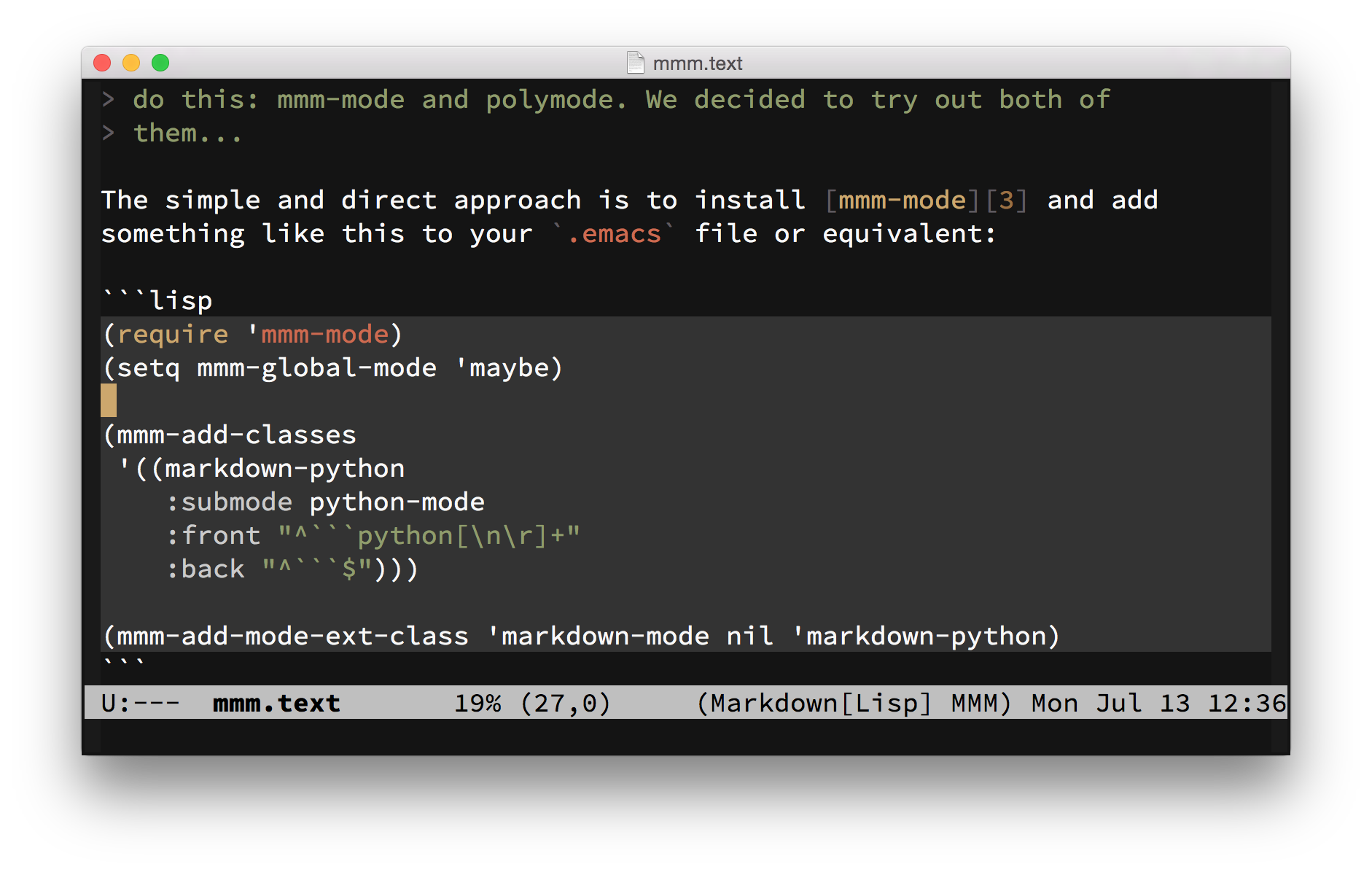
\usepackageĪnd then I later try to reference this, the reference to “Numbers and Basic Operations” comes out perfect but the reference to “NatNum” comes out “Ia” when I want it to come out just “I”. If you like to change the appearance of the enumerator, the simplest way to change is to use the enumerate-package, giving you the possibility to optionally choose an enumerator. The enumerate-environment is used to create numbered lists. Each of them provide four levels, which means you can have nested lists of up to four levels.

Requires the float package, i.e.Latex distinguishes between three different enumeration/itemization environments. Places the float at precisely the location in the LaTeX code. Override internal parameters LaTeX uses for determining "good" float positions.
#Aquamacs latex code leave it as it is how to
Place the float here, i.e., approximately at the same point it occurs in the source text (however, not exactly at the spot) 6.7 Codes and algorithms34 6.8 Cross-references.34 6.9 Reviewing the code.35 7 Useful websites35 References36 Preface This article is not a guide on how to write a thesis but explains how to rightly use L A TEX resources when writing it. If you do ask a question, link to it in a comment. My guess is that Latex handles the switch to vertical mode more smartly with \vspace than \vskip, but I would have to see an MGE to be confident. The placement specifier parameter exists as a compromise, and its purpose is to give the author a greater degree of control over where certain floats are placed. AlexReinking - If you are puzzled by the failure of my answer, it might be useful for you to ask it as a question, allowing the code to be discussed. However, there may be times when you disagree, and a typical example is with its positioning of figures. The previous section mentioned how floats are used to allow LaTeX to handle figures while maintaining the best possible presentation. To create a figure that floats, use the figure environment. ! LaTeX Error: Too many unprocessed floats. LaTeX by default can cope with maximum 18 floats and a symptomatic error is: The skill is to space them out within your text so that they intrude neither on the thread of your argument or discussion nor on the visual balance of the typeset pages.Īs with various other entities, there exist limitations on the number of unprocessed (placed) floats in line. In this case, LaTeX stacks them all up and prints them together if possible, or leaves them to the end of the chapter in protest. For quick feedback about any change you made, you can easily toggle between the inline preview and the LaTeX code of an image or formula. It takes a little work to do this properly, particularly. So when getting mathematics on to the web, one has to allow certain commands to go through.

Nearly all of the ways of getting mathematics on to the web start with some sort of LaTeX-like syntax. This can be changed by moving the Table or Figure definition to an earlier or later point in the text, or by adjusting some of the parameters which control automatic floating.Īuthors sometimes have many floats occurring in rapid succession, which raises the problem of how they are supposed to fit on the page and still leave room for text. Enable SyncTeX with Aquamacs: But if you combine two different applications, such as Aquamacs and Skim, spaces are very handy. What is slightly more intricate is making LaTeX in to a preprocessor for Markdown+Mathematics. If there is not enough room on the current page, the float is moved to the top of the next page. LaTeX automatically floats Tables and Figures, depending on how much space is left on the page at the point that they are processed. They always have a caption describing them and they are always numbered so they can be referred to from elsewhere in the text. Floats are there to deal with the problem of the object that won't fit on the present page and to help when you really don't want the object here just now.įloats are not part of the normal stream of text, but separate entities, positioned in a part of the page to themselves (top, middle, bottom, left, right, or wherever the designer specifies). LaTeX by default recognizes "table" and "figure" floats, but you can define new ones of your own (see Custom floats below). This is where floats come into play.įloats are containers for things in a document that cannot be broken over a page.

It would also be good if LaTeX could apply principles similar to when it arranges text to look its best to arrange pictures as well. What we need is a way of defining figures. To start with, we want a way of adding captions, and to be able to cross-reference. However, just having a picture stuck in between paragraphs does not look professional. The previous chapter introduced importing graphics.


 0 kommentar(er)
0 kommentar(er)
